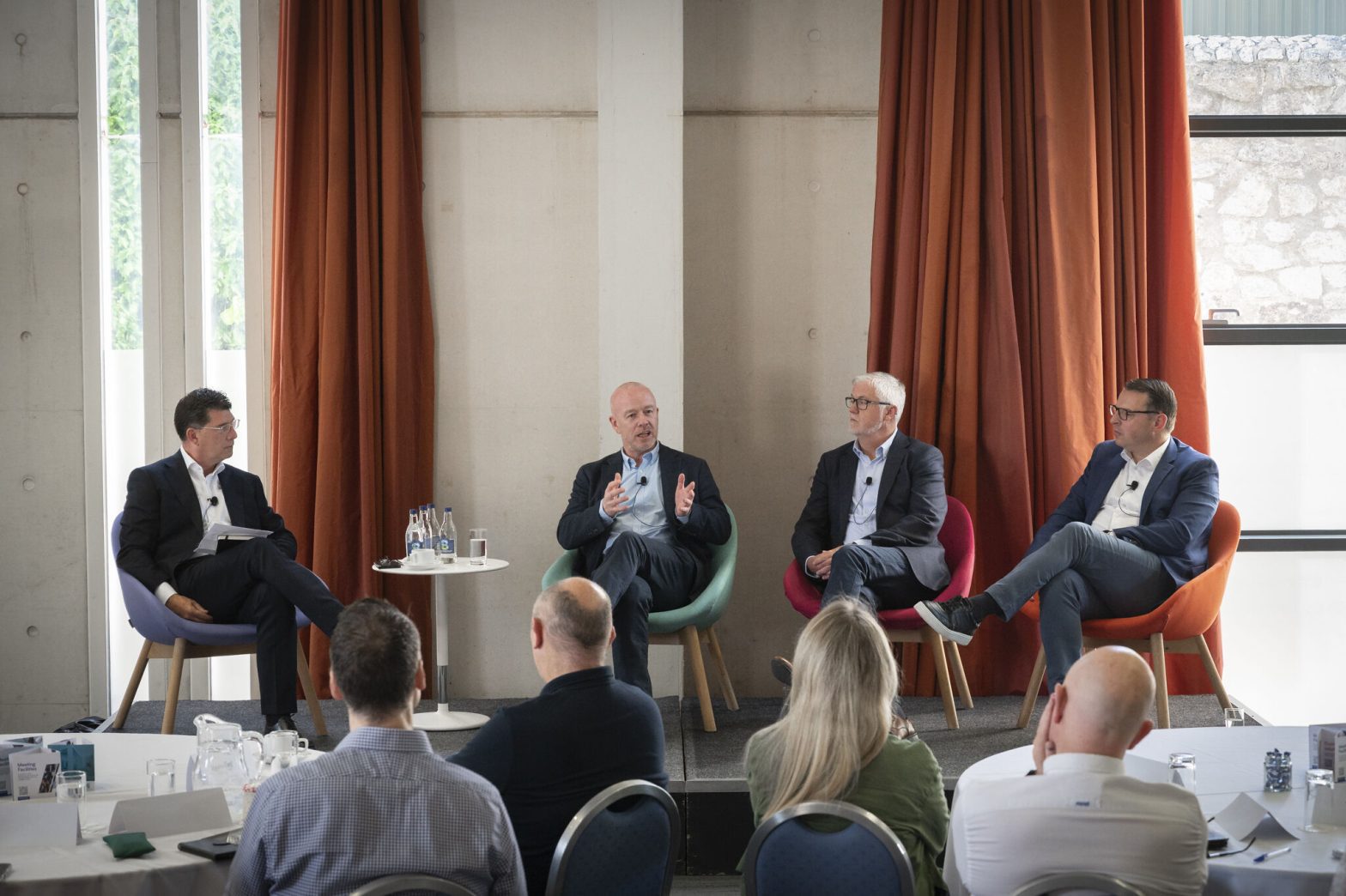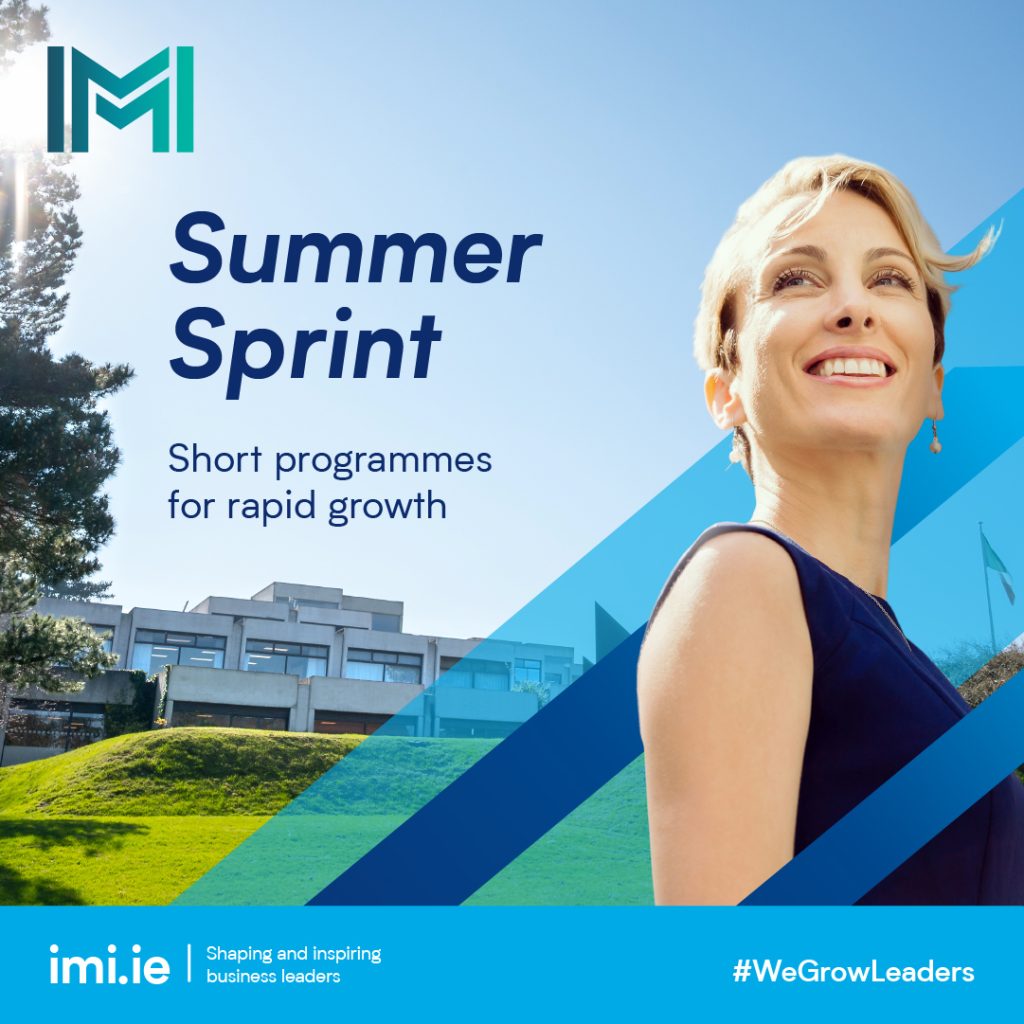Event Insights: Discover Your Keys to Sustainable High Performance
By IMI | 22nd March 2023
According to James Hewitt, speaking at a recent IMI Corporate Membership Webinar, 75% of adults say they feel stressed. It’s both a shocking and completely expected statistic. In fact, some might argue that the real figure is even higher. While over the past few decades, work has become easier on our bodies, it has also become increasingly more taxing on our minds. James Hewitt says that top performers can find ways to transform stress and uncertainty into a competitive advantage.
The first thing we need to do is recognise the difference between being stressed and being “stressed out”. Stress in isolation is neither inherently “good” nor “bad”. In fact, some level of stress can actually support high performance. When you’re experiencing this type of stress, there’s a balance between the demands placed on you, and your capability to meet them. This might manifest as excitement to meet a challenge, and can help you to adapt to experiencing more stress in the future. However, feeling “stressed out” means that there is a disconnect between the demands and your capabilities, which leads to a deterioration in your physical and psychological systems – i.e: the dreaded burnout.
Studies that have tracked stress in people who work Monday – Friday show that recovery only takes place over weekends. The lack of recovery during the work week can lead to a negative impact on cognitive performance, even in generally high-performing teams and organisations. This lack of recovery has a lot to do with the inability to switch off. High performers don’t seem to have an issue with switching on – but they do struggle to turn off and relax. In fact, 71% of professionals say this is true.
And why is that? The answer is simple – knowledge workers are busier than ever! The number of meetings has increased by 153%, overlapping meetings have increased by 46% per person, and 42% of workers say they multitask during meetings. While none of these statistics are particularly surprising, it’s important to note that we are limiting our cognitive performance as a result.
We need to re-learn to switch off
When was the last time you scheduled time specifically to switch off? While it might be easier said than done, understanding the nervous system is key to allowing yourself to switch off. You can think of the nervous system as having two branches: the sympathetic and the parasympathetic. The former is the “fight or flight” response, while the latter acts like a brake. We need to have a balance between these two branches.
Using a measure of heartrate variability (the difference in time between each heartbeat) is a good way to see if you’ve achieved this balance. When the HRV is high, it means that our parasympathetic nervous system is doing its job. We can improve our HRV by means of breathing exercises – they’re not just for calming down! Practicing Symmetric Pattern Breathing regularly over the period of a few months can lead towards a durable shift in parasympathetic dominance. Here’s how to do it:
- Inhale and count 1 – 5
- Hold your breath and count 1 – 2
- Exhale and count 1 – 5
There are also several factors which can suppress your HRV, for example alcohol, caffeine, and high intensity exercise. High performers often tend to load stress on stress – for example when they’ve had a particularly hard day at work, they might do an equally hard gym session, which can overload the nervous system and lead to the state of being stressed out. That’s not to say that there aren’t benefits to physical exercise! More about that a little later.
We need to re-learn how to switch off when we want to. It’s not enough to simply give our bodies a break, when our brains need a break too. During a break, our brains experience lower stress, which can be measured in practice by the change in brain wave activity. The most effective breaks have four characteristics:
- Relaxing: Breaks should be physically relaxing, as well as mentally relaxing to allow your cognitive load to decrease.
- Active: Get away from your desk and move around during your break.
- Social: Speaking to co-workers or friends about non-work-related topics – calling someone on the phone rather than texting also works.
- Natural: A ten minute break outside in a natural setting is associated with improved performance.
As a leader in your organisation, you have an important role to play in wellbeing at an organisational level. While legacy thinking was that wellbeing was an individual responsibility, a shift is occurring, with more of a focus on the leaders. Leaders need to be explicit in allowing people to switch off, whether this is at certain times of the day – like during a lunchbreak – or when they get home after work. But it’s not enough to simply tell your team members that they should switch off – you need to model this yourself.
How can movement help to enhance cognitive performance and manage stress?
The average professional spends over 12 hours sitting per day. If we sit for more than 13.5 hours, the equivalent of taking less than 4,000 steps per day, we won’t enjoy the same benefits of exercise that we usually would. Sitting is an independent risk factor – even if you go to the gym regularly, you can’t counteract the effects of so much sitting.
We can resolve this issue with even small amounts of physical activity, for example going for a walk, or “exercise snacking” like climbing a few flights of stairs every day. 80% of our brain’s grey matter is modifiable by physical activity. A 50 minute workout enhances attention, concentration, working memory, reasoning and planning. Even just six minutes of high intensity exercise could support memory and brain function.
Sleep stress and cognitive performance
We’ve all felt that vicious cycle – you struggle to sleep due to stress, which in turn makes you feel even more stressed. More than 1/3 of people get less than seven hours sleep per night, which leads to a deterioration in cognitive performance. Most of us don’t realise that we are working at a fraction of our potential. If you could sleep adequately more often, you could increase your performance, or decrease your stress.
A study showed than getting less than six hours sleep per night over a period of two weeks was equivalent to going one full night with no sleep at all. This alone should tell you just how important it is to prioritise your sleep.
How can we improve sleep? Firstly, getting enough light is crucial for maintaining a stable circadian rhythm. You should aim to get bright, natural light within two hours of waking up, and avoid bright light in the evening. If you plan to watch TV or using other screens before bed, make sure you counteract this with more natural light in the mornings.
Secondly, don’t underestimate the power of a nap! A 10 minute nap can improve cognitive performance and energy, and decrease sleepiness for up to two hours. You just need to be careful to not nap for too long – if you enter the sleep stages, you could wake up even more tired.
There’s also a strong relationship between alcohol and sleep. While it does decrease the time we need to fall asleep, it also seriously disrupts our sleep pattern and the quality of our sleep.
You can follow a few tips to help improve your sleep overall. Ensure that your room is dark and keep the temperature to around 18 degrees Celsius. Avoid caffeine after midday, stop alcohol consumption as early as possible, and try not to use any screens for an hour before bedtime. Finally, keep to a sleep schedule and make sure that you’re exposed to bright, natural light during the day to help “tune” your body clock.
—
IMI Corporate Members get access to regular in-person and virtual events. Find out more about IMI membership.



